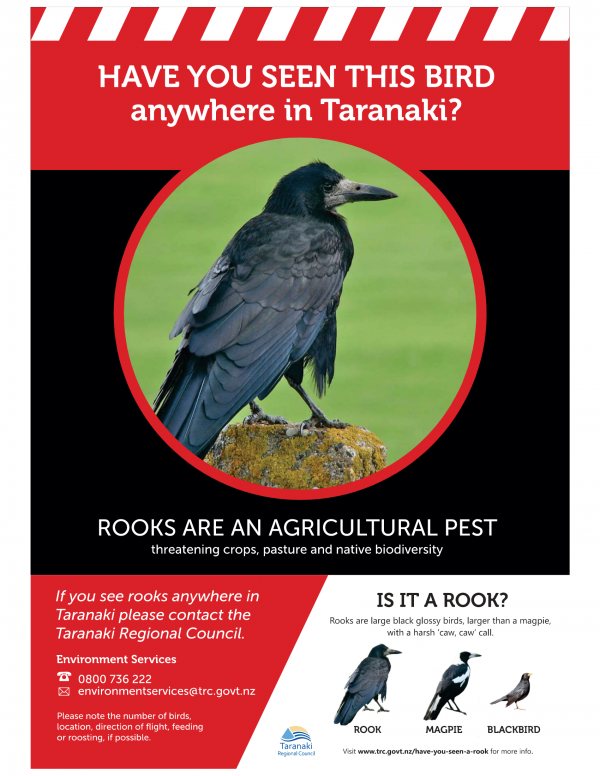Is it a bird, is it a plane, is it a large black bird threatening cropping and horticulture in Taranaki?
Taranaki Regional Council is urging the public to report potential sightings of a large black glossy bird called a rook. It is slightly larger than a magpie, with a harsh call. You can listen to its call here (external link)
Click here (external link)to report a possible sighting. We'll ask you for details such as the bird's location and behaviour. Was it flying and in what direction, was it feeding or roosting? We'll also ask how sure you are it was a rook - so please report it even you are not certain.

Rooks are a pest animal, which in high numbers are capable of wiping out crops and horticulture, and have been sighted in New Plymouth.
The Council wants to eradicate them before they become established in the region. Rooks have so far been prevented from establishing in Taranaki and sightings are extremely rare.
However, rooks have been a problem in the east of the North Island, from Wellington to the Hawkes Bay.
Slightly larger than a magpie, the birds are capable of wiping out crops in a few days, as flocks target them as an alternative food source to insects. Rooks may target young crops, especially cereals and new grass, eating grubs, seed or seedlings.Ripening walnuts are also a favourite.
They can also impact the native bird population as they harass native birds and restrict their range.
Rooks like nesting in the tops of tall pines and eucalyptus trees, but have been known to nest in other types of trees. Twigs, leaves, and pine needles are used to build their nests, which are usually lined with wool and grass. Rooks often nest within metres of each other, in groups called rookeries. They can have up to six eggs.
Rooks are the only pest animal where total eradication is sought in Taranaki.